According to a Nielson survey, 59% of consumers prefer to buy new products from brands familiar to them.
Good News: If you are entering a market that already has competition, you still have a vast number (41%) of consumers who are not fixated on your competitors’ brands. That is a large segment of users who are sitting ducks for you to target. So how does one go about building a brand that will help you grab eyeballs and get conversions?
It is true that a recognizable and loved brand is one of the most valuable assets a company owns.
A brand could be a new product, company, or person. It could even be a book if you are a writer.
To develop a brand from scratch, the basic process to be followed will be the same, no matter what brand/product, and it doesn’t change from brand to brand.
We always tell our authors that some of the most important messages that you need to give your target customers are-
Brand: “Hey, I am out here!”
If they don’t know your book is out there, they cannot buy your book, product or service. Next important question is
Brand: “Look at my offering.”
Customer: “What’s so good about your brand/offering?”
Customer: “I am flooded with similar products. I don’t need another one.”
Brand: “ …………………. I am going to give you that is unique and let me tell you the different ways in which you will benefit by following/buying/using this brand:
1.
2.
3 ……………………………………”
To have this conversation effectively, you must have the following information.
- Know your target customer/audience/readers e.g. Are your target customers teenagers or senior citizens, do they belong to HNI or are middle class, are they women or men, are they professionals or blue-collar workers?
- How will your product help the client e.g., Does your product make their skin smoother, or does it makes it firm, removes wrinkles, or removes blemishes?
- What is unique about your product. – It does one or more of the above functions but faster than any cream available in the market, or perhaps it’s cheaper or can be used long term with no side effect.
- What problem of the client will it solve? – solve the problem of pimples – smooth glowing skin, remove blemishes, thus making the skin smooth, removes wrinkles – thus a younger-looking skin.
- What is the name, branding and logo for your brand? E.g.: An author chooses his book to be his brand, he can select his book cover, to represent his brand. Every time he communicates with his audience, he displays the cover. If he is writing a post on LinkedIn, he can make his book cover his logo. Thus, a book cover becomes very important to an author’s brand-building strategy, as that will be the most visible image. That goes for all logos/images that you design to represent your brand – it is essential that one spends time planning a logo.
Once you have answered through research and discussion, the above questions comes the significant next step- how will you convey these messages? Meaning the medium you will use to send the messages.
A list of different media will need to be drawn up once the list is ready to keep in mind the target audience. Choose the medium through which you will give the message keeping in mind the target audience e.g., If your target audience is young, then digital media works well, for professionals LinkedIn or Business magazine or Business newspaper. Whatever the medium, one must have a number of marketing options to begin with.
Why do we need many mediums through which messaging should be done?
In the beginning, you are still trying to figure out which mediums are most effective for your target audience. The operative word is mediums because a person needs to hear your band name at least 3 times before it starts registering. The greater the variety of mediums he hears it from, the better it will be remembered.
Hence repetition of your message and brand name should be delivered repeatedly and in a variety of ways, eg: pamphlets, videos, advertisements, digital marketing.
You may think all this sounds somewhat forbidding. And you are right to build a brand is no chicken feed. It requires vision, persistent effort, willingness to fail and rise again and willingness to learn.
Good News is that the process can be made easier by researching what others in the same or similar domain are doing. Researching means we do not have to start from scratch independently. That said – a brand should not become copy paste but must have a unique message and a unique product for the target audience for the brand to be successful.









